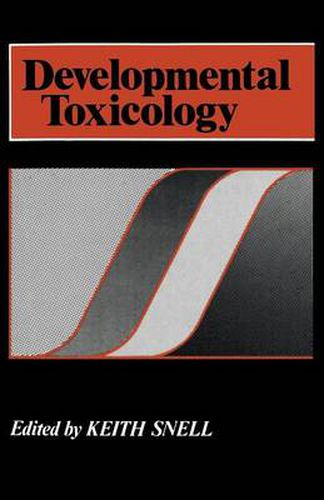Readings Newsletter
Become a Readings Member to make your shopping experience even easier.
Sign in or sign up for free!
You’re not far away from qualifying for FREE standard shipping within Australia
You’ve qualified for FREE standard shipping within Australia
The cart is loading…






This title is printed to order. This book may have been self-published. If so, we cannot guarantee the quality of the content. In the main most books will have gone through the editing process however some may not. We therefore suggest that you be aware of this before ordering this book. If in doubt check either the author or publisher’s details as we are unable to accept any returns unless they are faulty. Please contact us if you have any questions.
Since the 1930s and the work of Hale and Warkany on birth defects produced by variations in dietary vitamin A, it has been recognised that the developing fetus is particularly vulnerable to adverse influences in the environment. . Studies of malformations at birth remained largely in the hands of paediatricians who, for instance, quickly established the con nection between rubella infection in early pregnancy and the birth of severely affected infants. However, it was through the tragic events of 1962, when dramatic increases in the incidence of phocomelia in newborn infants in Germany, the United Kingdom, Japan, and other countries were traced to the use of the apparently non-toxic sedative thalidomide by pregnant women, that toxicologists were brought face to face with the devastating possibility of chemically-induced developmental abnormalities. It had been shown earlier that chemotherapeutic agents could cause damage to the developing organism, but the absence of any known examples of drug-induced birth defects had produced an air of complacency which was reinforced by the lack of any specific regulatory requirements for safety evaluation in this area. The magnitude of the thalidomide tragedy, affecting some 10000 malformed children, was sufficient to cause an immediate, and some would say hasty, reaction by government drug regulatory agencies throughout the world to construct a test protocol which would detect potential teratogenic substances that might give rise to anatomical malformations.
$9.00 standard shipping within Australia
FREE standard shipping within Australia for orders over $100.00
Express & International shipping calculated at checkout
This title is printed to order. This book may have been self-published. If so, we cannot guarantee the quality of the content. In the main most books will have gone through the editing process however some may not. We therefore suggest that you be aware of this before ordering this book. If in doubt check either the author or publisher’s details as we are unable to accept any returns unless they are faulty. Please contact us if you have any questions.
Since the 1930s and the work of Hale and Warkany on birth defects produced by variations in dietary vitamin A, it has been recognised that the developing fetus is particularly vulnerable to adverse influences in the environment. . Studies of malformations at birth remained largely in the hands of paediatricians who, for instance, quickly established the con nection between rubella infection in early pregnancy and the birth of severely affected infants. However, it was through the tragic events of 1962, when dramatic increases in the incidence of phocomelia in newborn infants in Germany, the United Kingdom, Japan, and other countries were traced to the use of the apparently non-toxic sedative thalidomide by pregnant women, that toxicologists were brought face to face with the devastating possibility of chemically-induced developmental abnormalities. It had been shown earlier that chemotherapeutic agents could cause damage to the developing organism, but the absence of any known examples of drug-induced birth defects had produced an air of complacency which was reinforced by the lack of any specific regulatory requirements for safety evaluation in this area. The magnitude of the thalidomide tragedy, affecting some 10000 malformed children, was sufficient to cause an immediate, and some would say hasty, reaction by government drug regulatory agencies throughout the world to construct a test protocol which would detect potential teratogenic substances that might give rise to anatomical malformations.